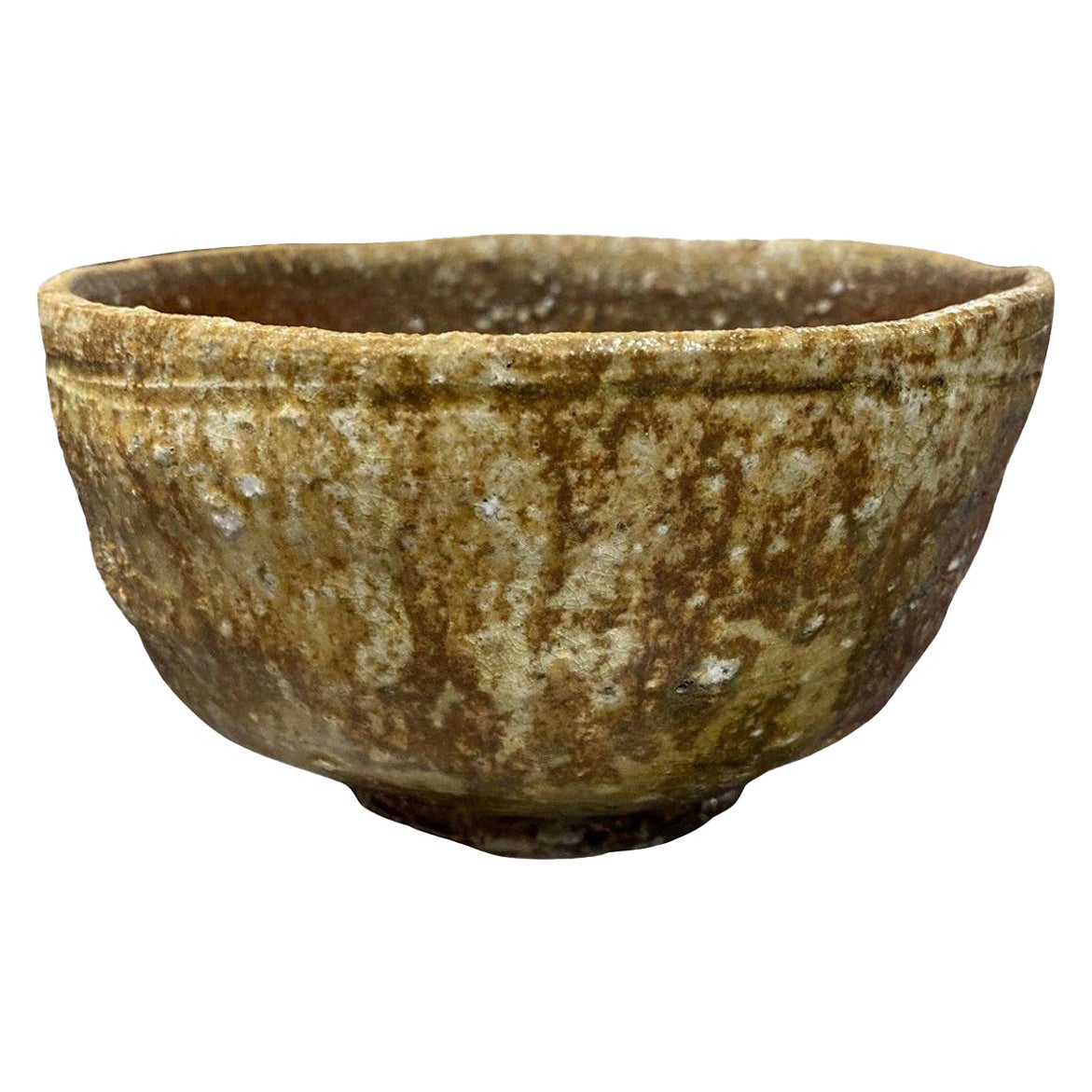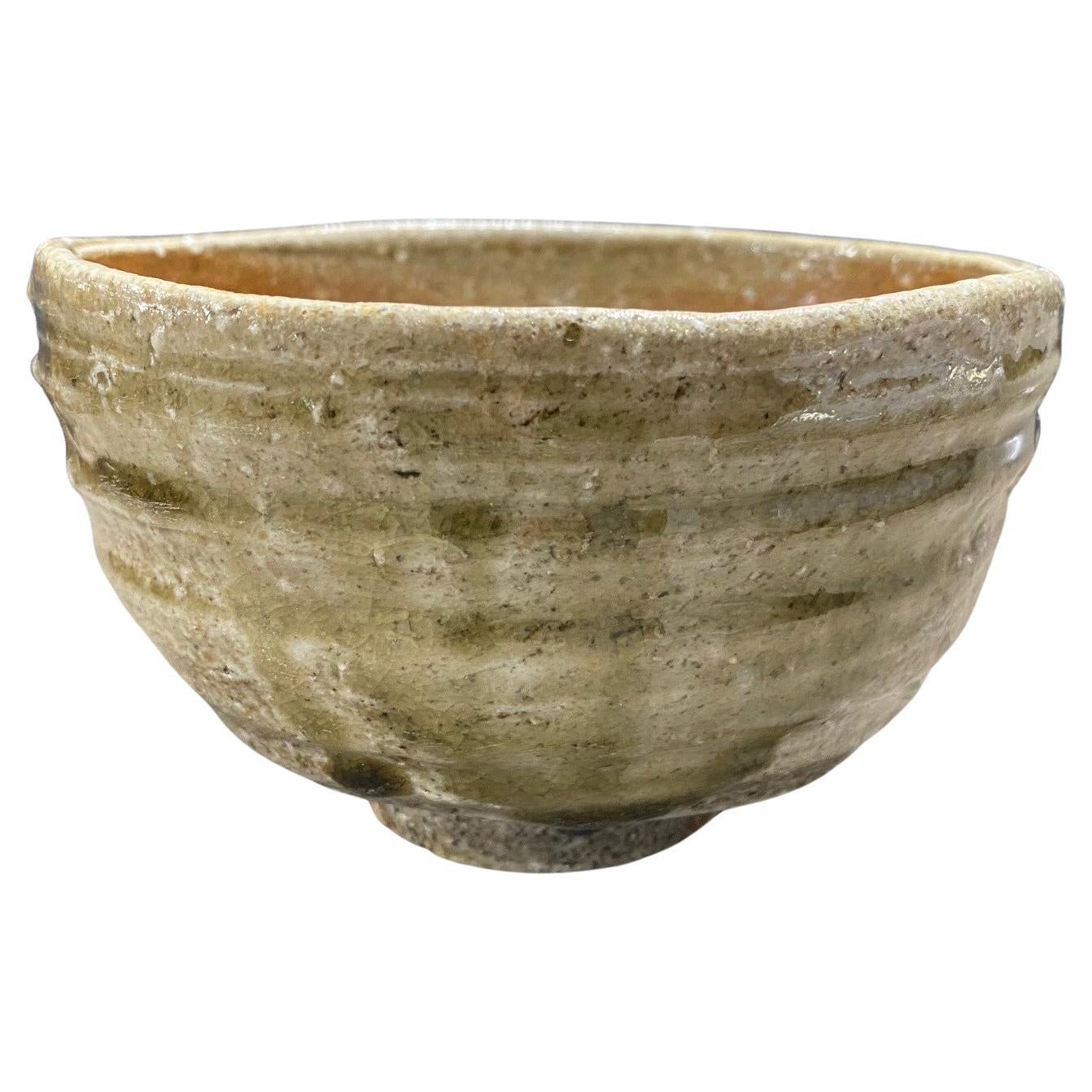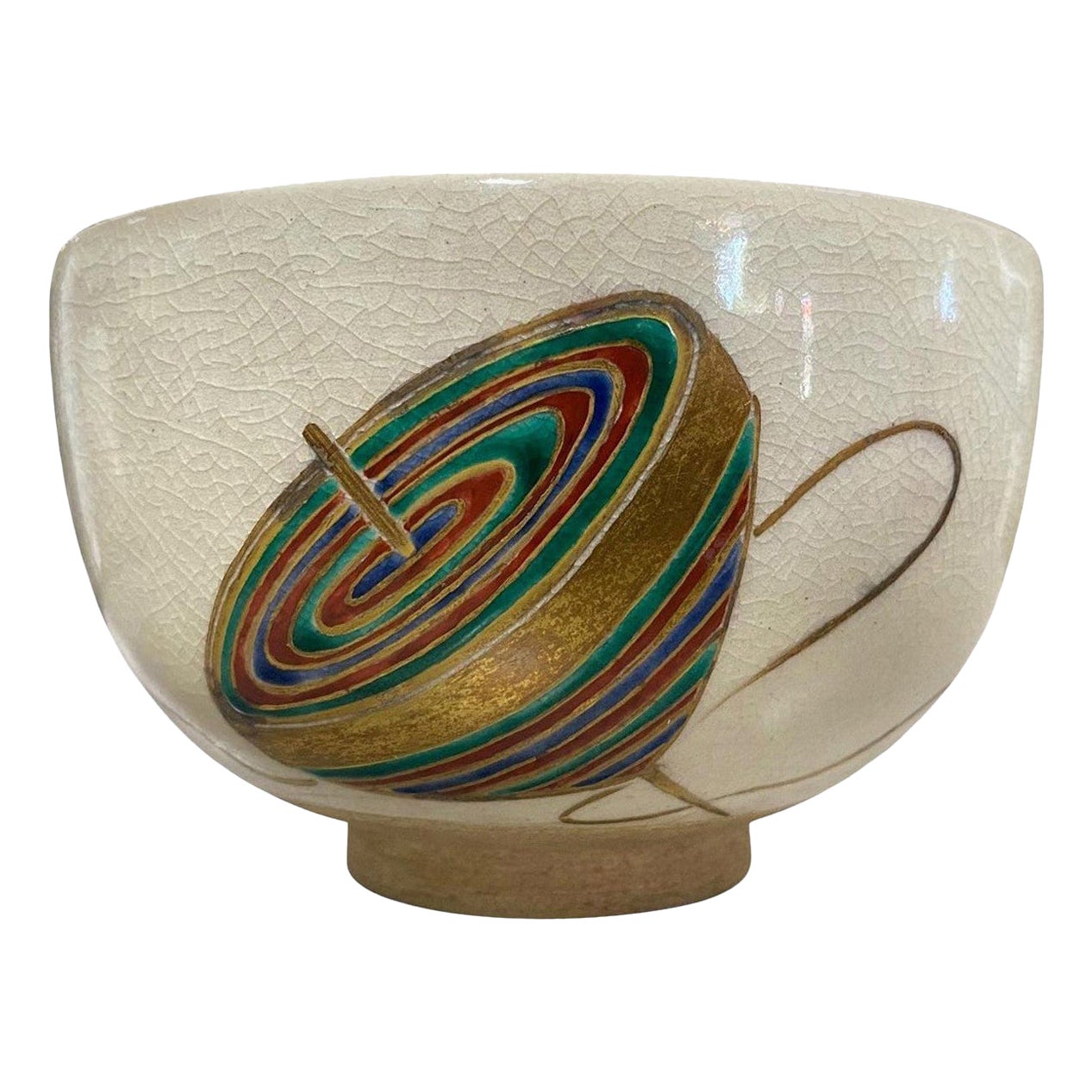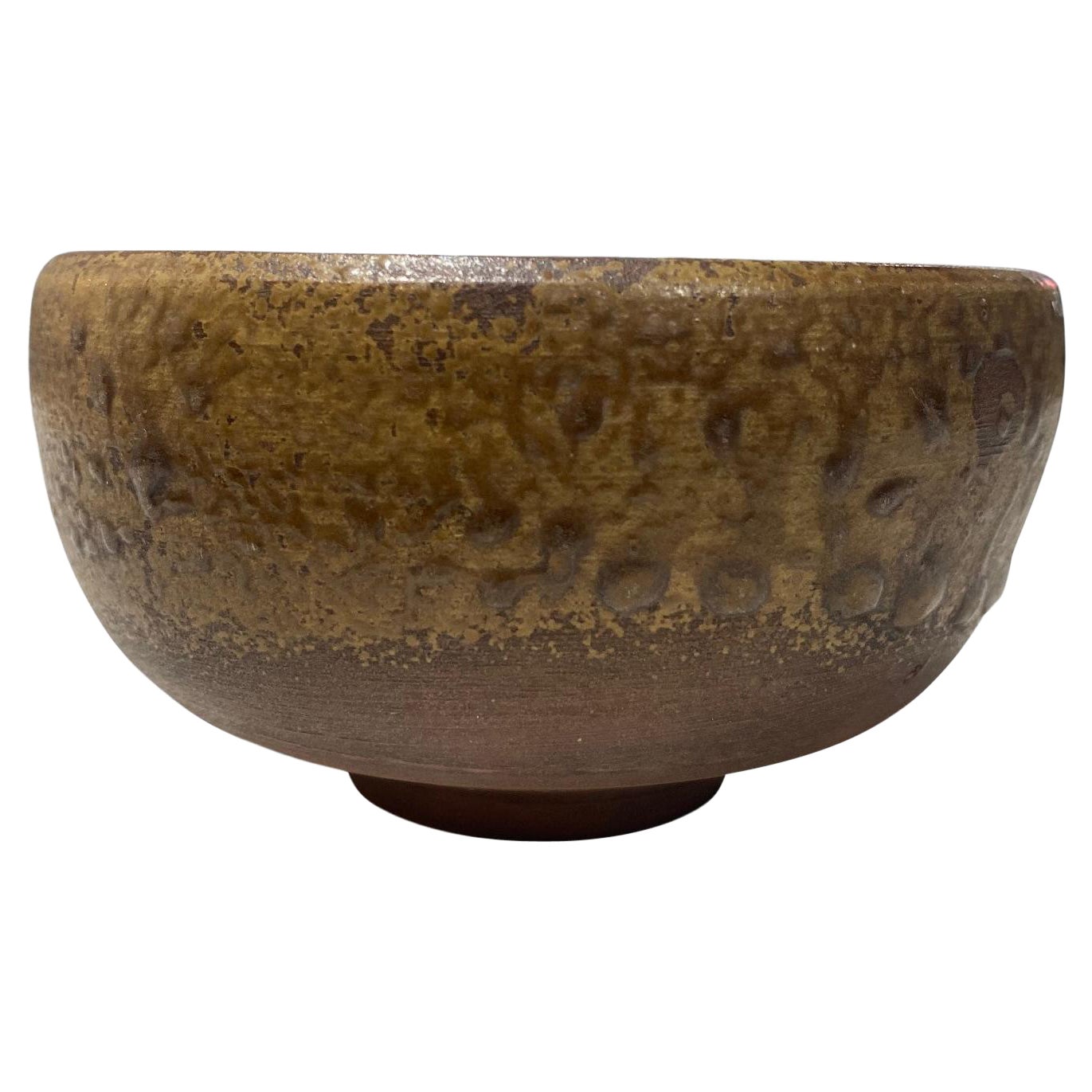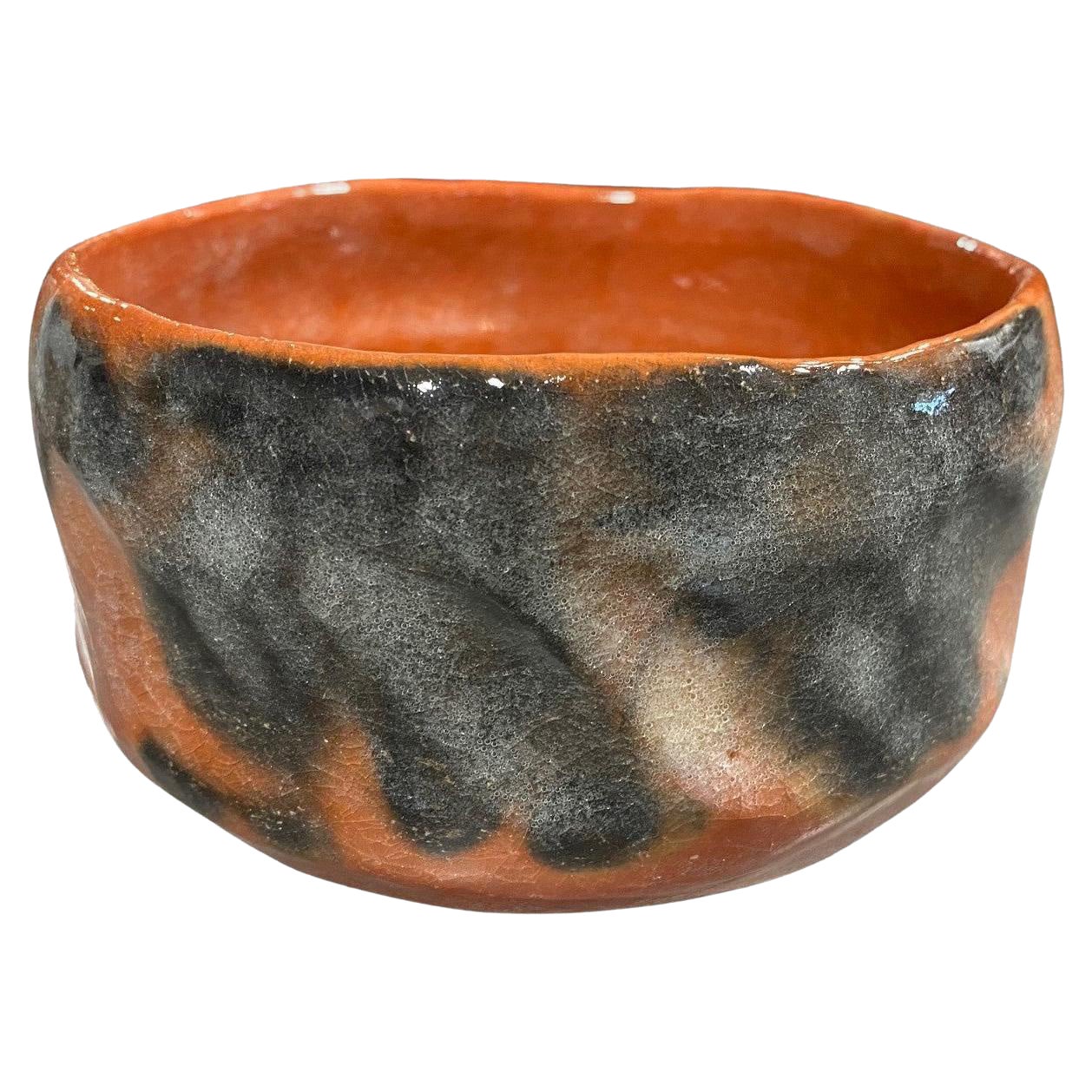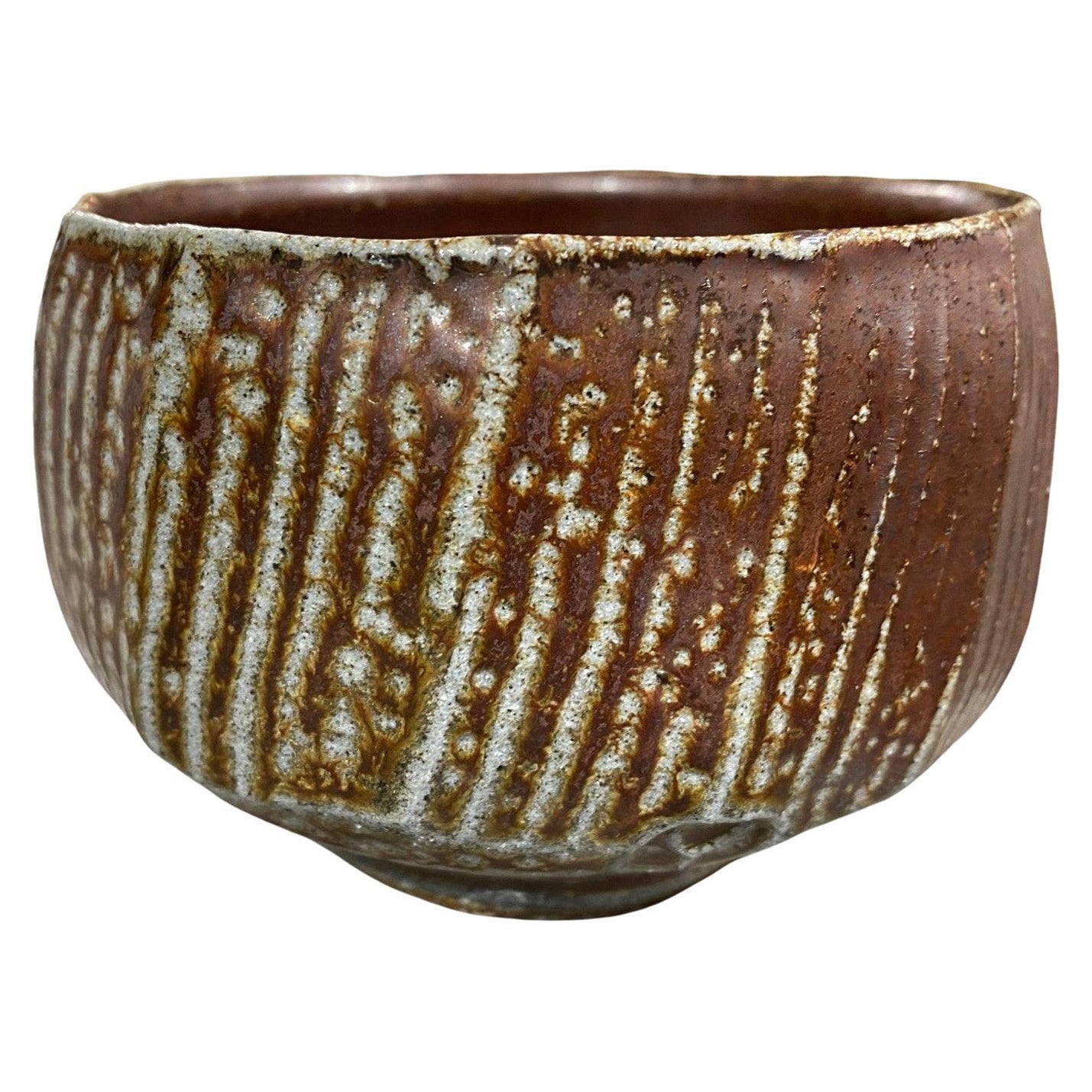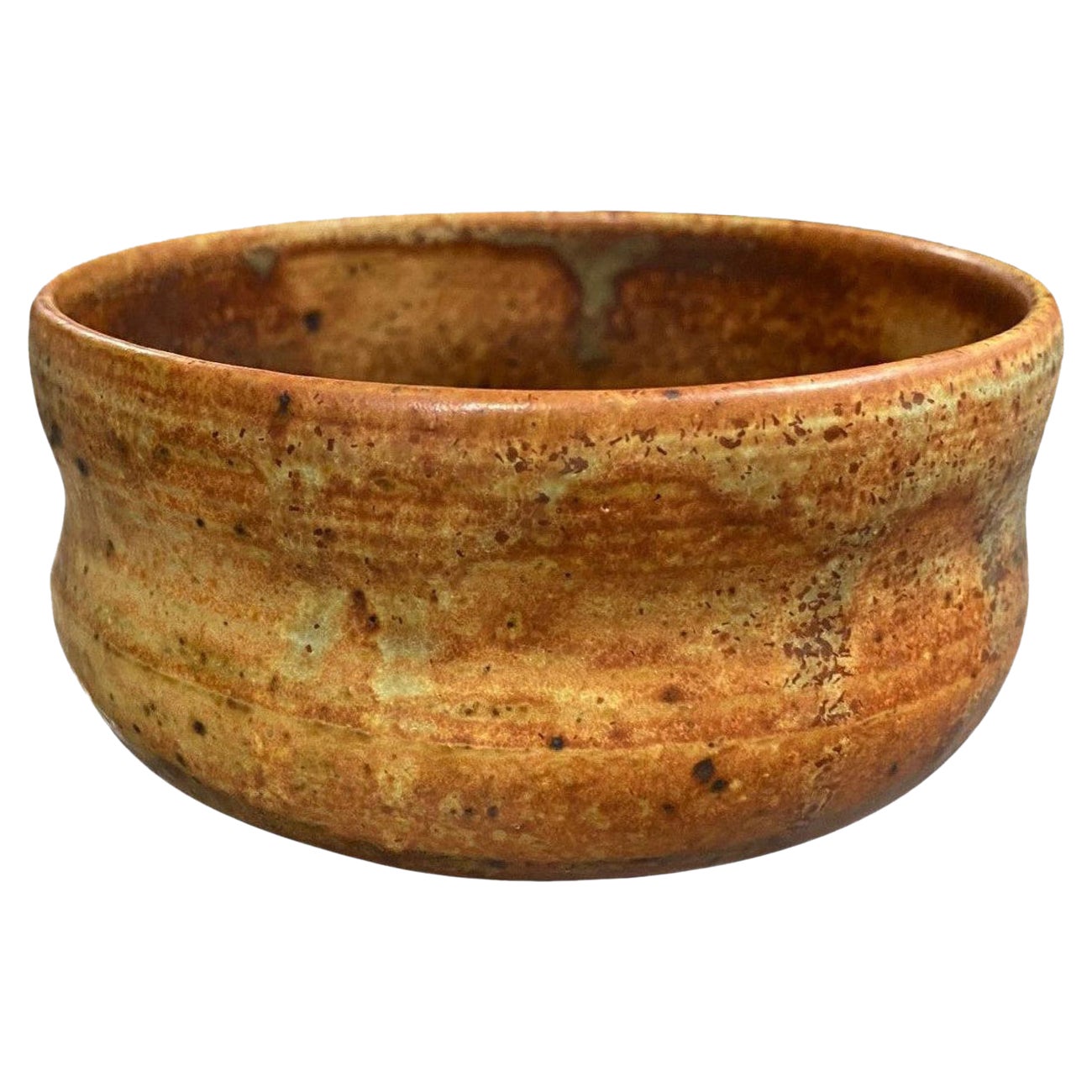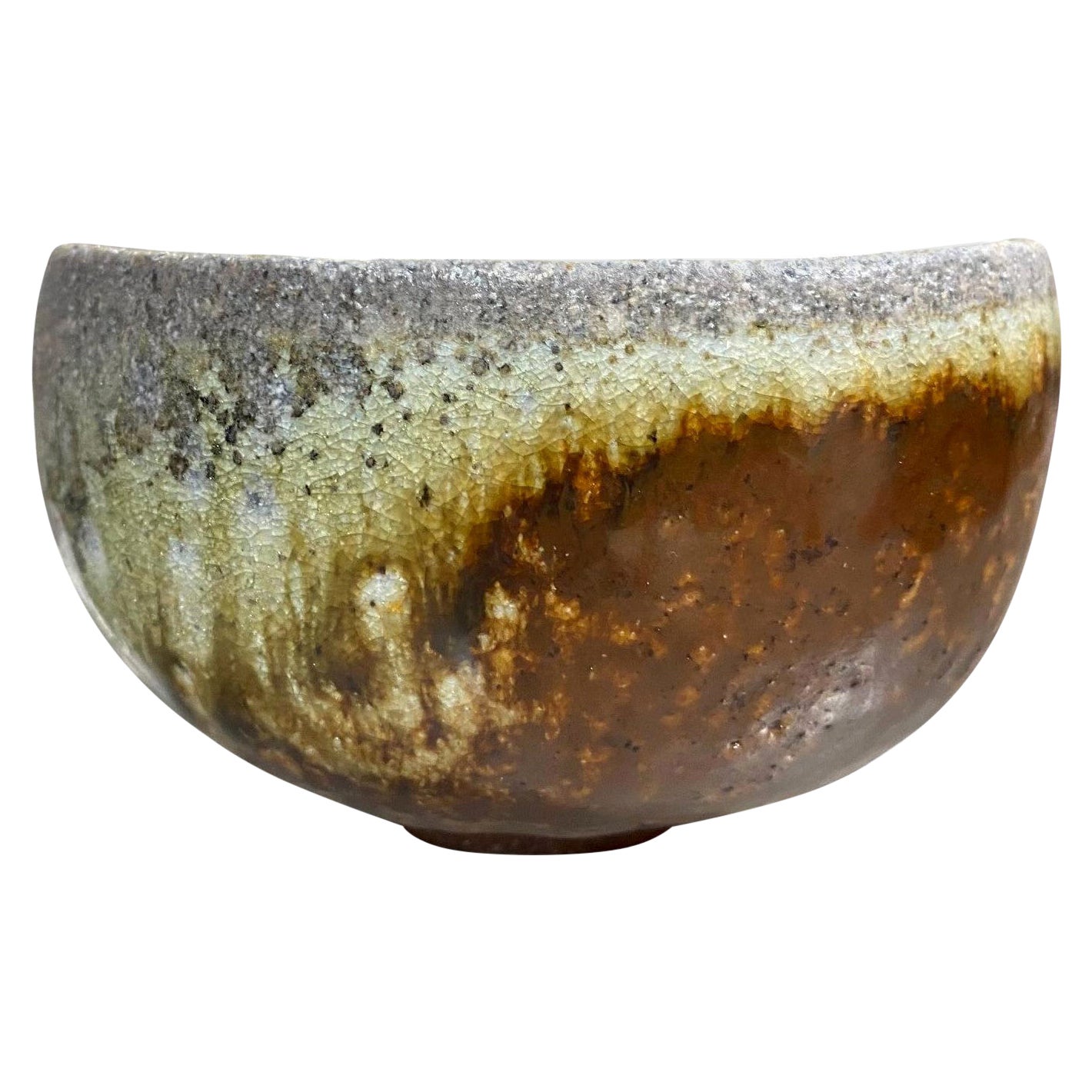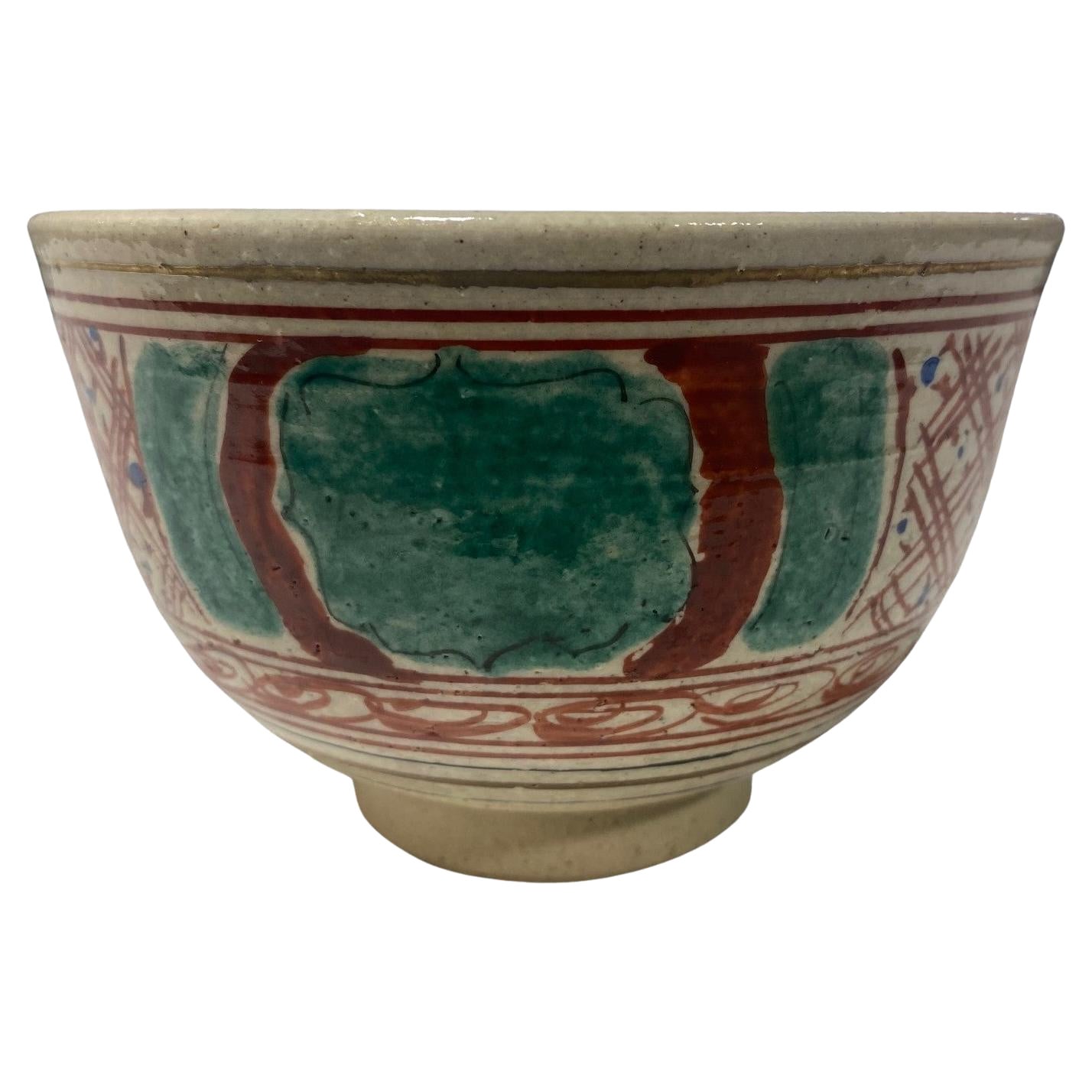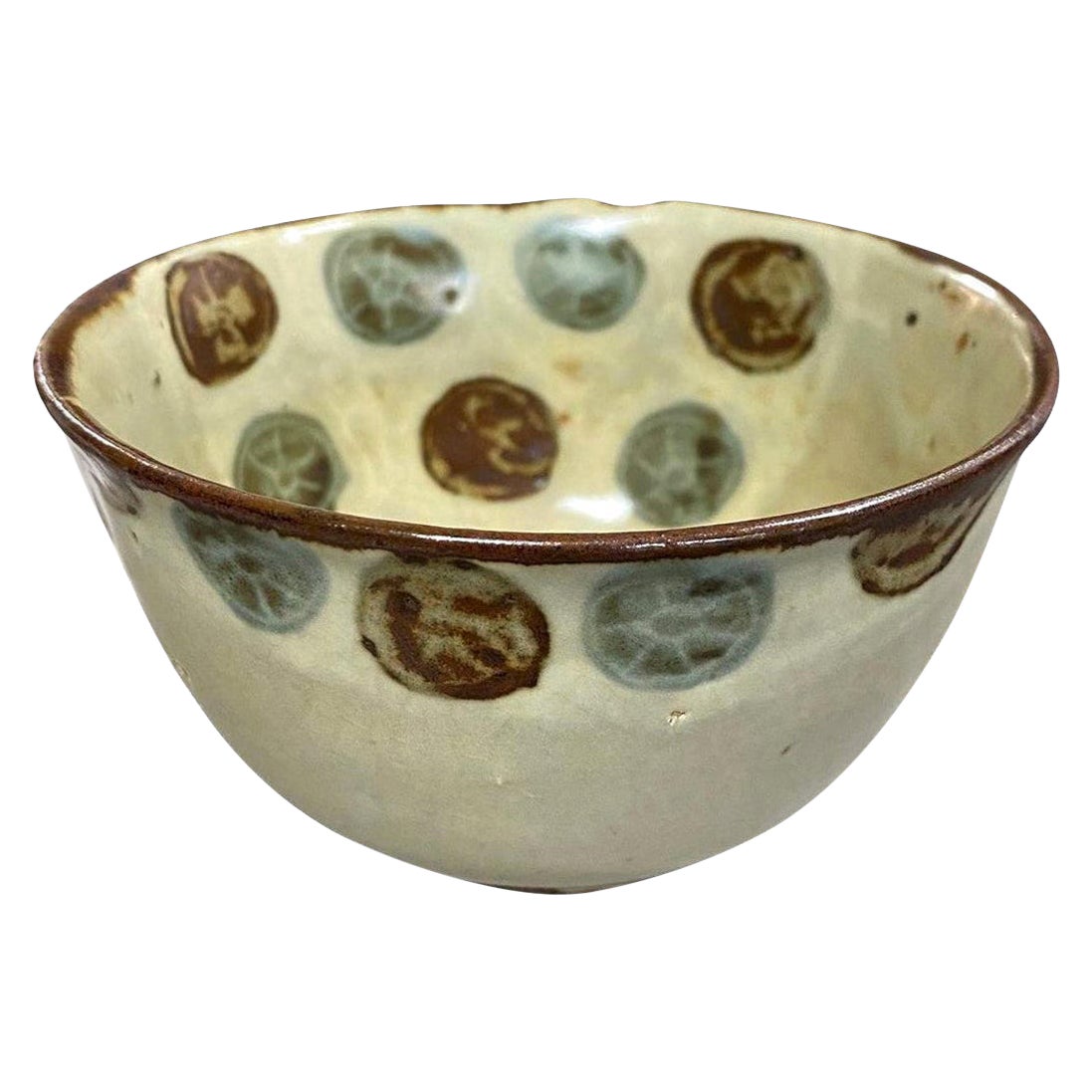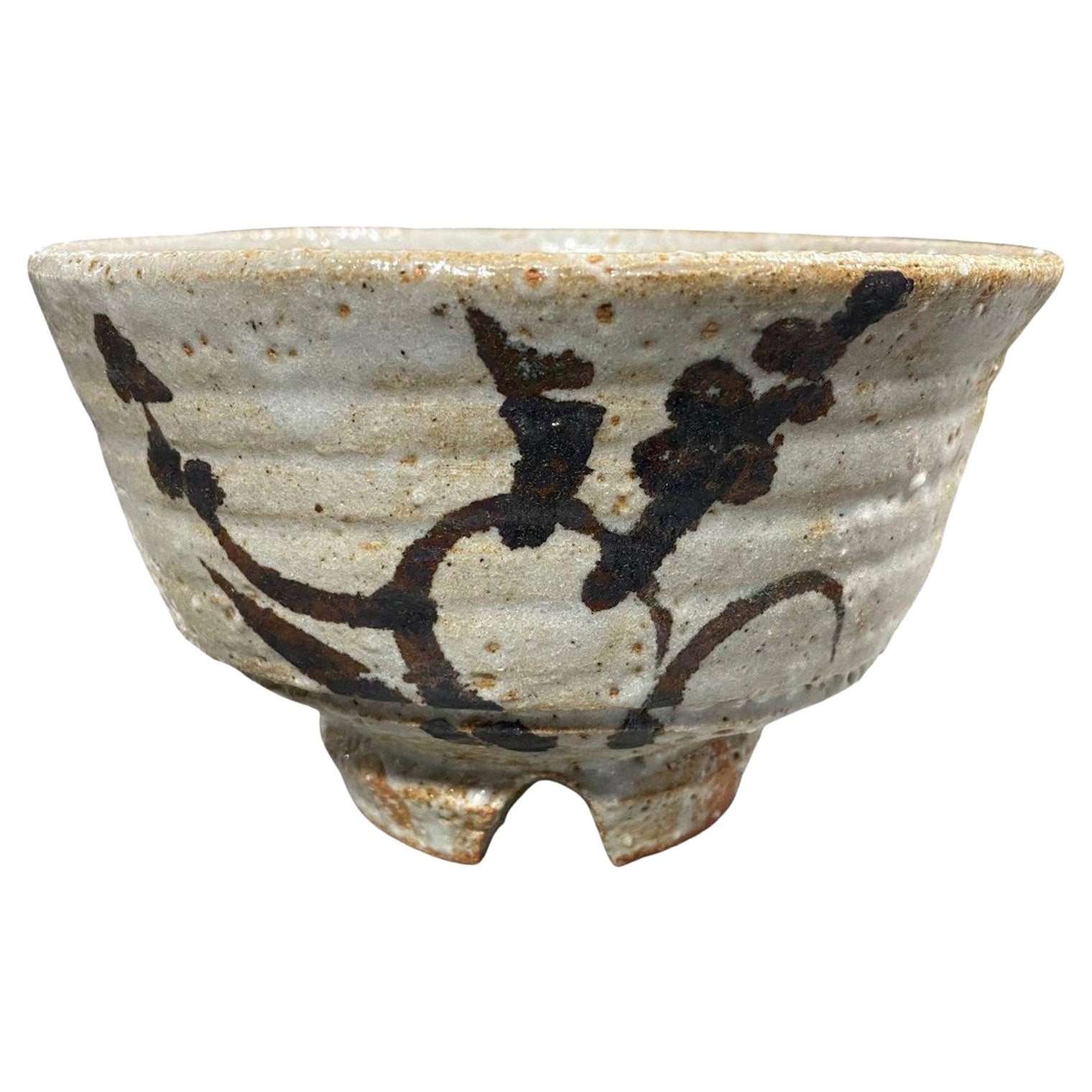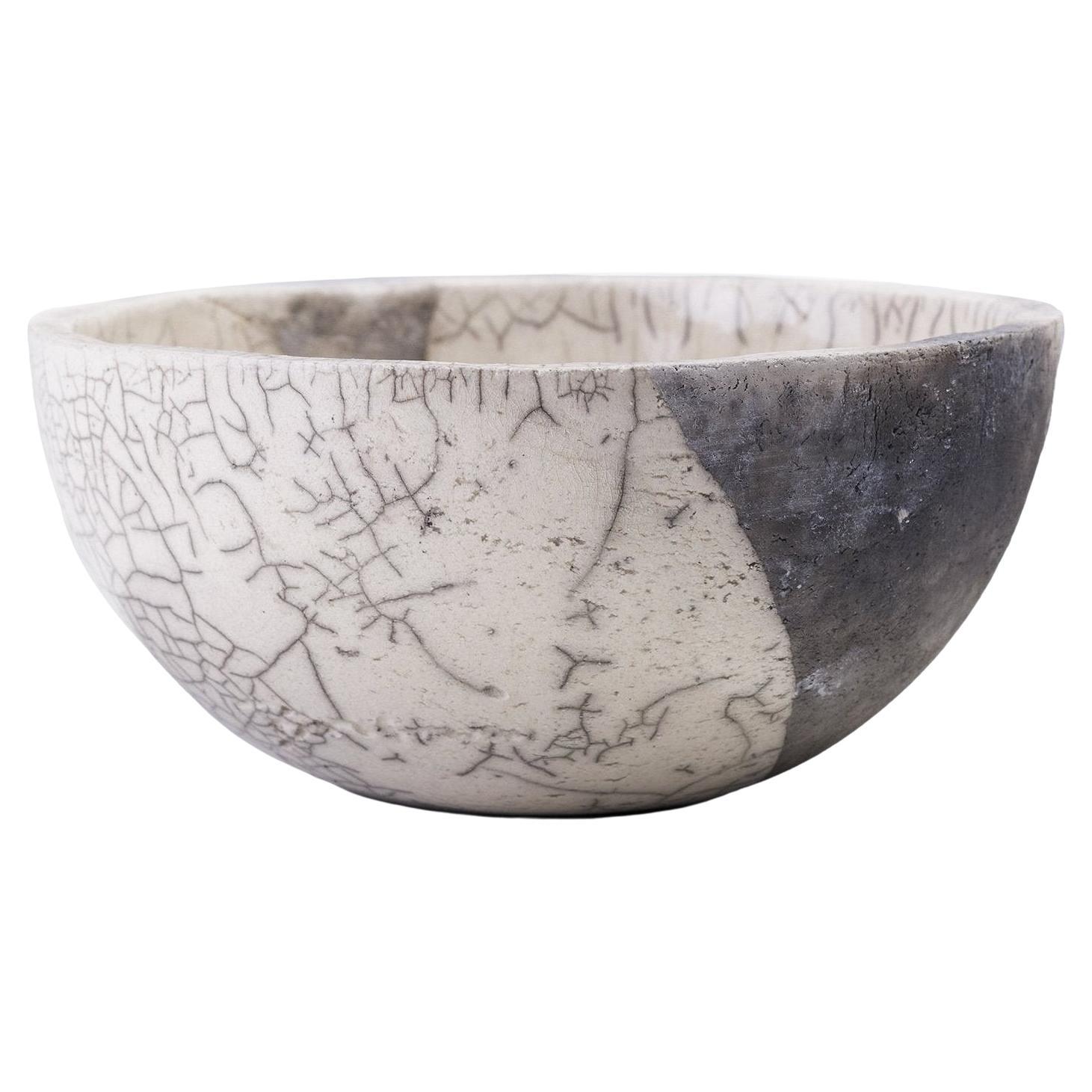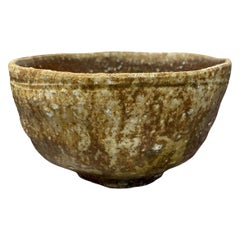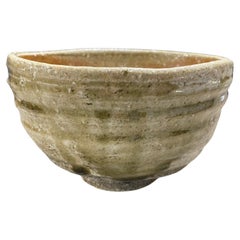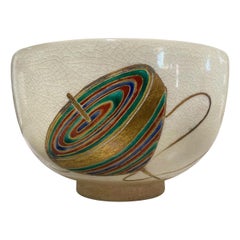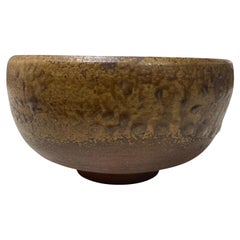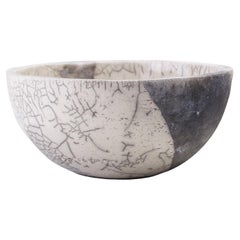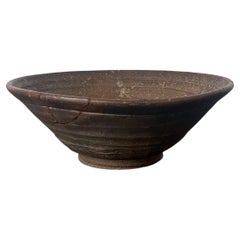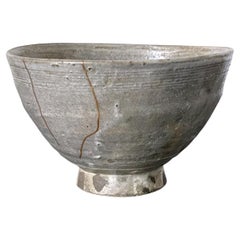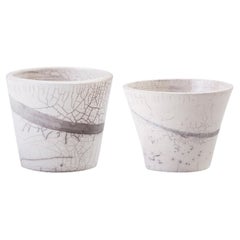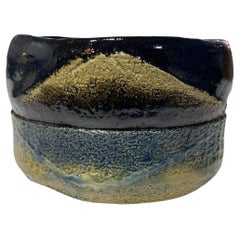
Sasaki Shoraku III Signed Japanese Raku Pottery Chawan Tea Bowl with Signed Box
View Similar Items
Want more images or videos?
Request additional images or videos from the seller
1 of 21
Sasaki Shoraku III Signed Japanese Raku Pottery Chawan Tea Bowl with Signed Box
Price:$506
$595List Price
About the Item
- Dimensions:Height: 4.75 in (12.07 cm)Width: 5.75 in (14.61 cm)Depth: 5.75 in (14.61 cm)
- Style:Showa (Of the Period)
- Materials and Techniques:
- Place of Origin:
- Period:
- Date of Manufacture:20th Century
- Condition:In very good to excellent vintage condition with no discernable flaws, cracks, chips, etc... The original box is also in very good vintage condition (please see photos). A beautiful and unique work overall.
- Seller Location:Studio City, CA
- Reference Number:1stDibs: LU2254333706842
About the Seller
5.0
Platinum Seller
Premium sellers with a 4.7+ rating and 24-hour response times
1stDibs seller since 2016
910 sales on 1stDibs
Authenticity Guarantee
In the unlikely event there’s an issue with an item’s authenticity, contact us within 1 year for a full refund. DetailsMoney-Back Guarantee
If your item is not as described, is damaged in transit, or does not arrive, contact us within 7 days for a full refund. Details24-Hour Cancellation
You have a 24-hour grace period in which to reconsider your purchase, with no questions asked.Vetted Professional Sellers
Our world-class sellers must adhere to strict standards for service and quality, maintaining the integrity of our listings.Price-Match Guarantee
If you find that a seller listed the same item for a lower price elsewhere, we’ll match it.Trusted Global Delivery
Our best-in-class carrier network provides specialized shipping options worldwide, including custom delivery.More From This Seller
View AllRakusai Takahashi III Signed Japanese Shigaraki Pottery Chawan Tea Bowl with Box
By Takahashi Rakusai III
Located in Studio City, CA
A stunning Shigaraki ware pottery chawan tea bowl by famed Japanese master potter the 3rd Rakusai Takahashi. The bowl features a beautiful, unique natural organic ash glaze with wonderful shifts in colour and texture.
Rakusai Takahashi III (1898-1976) is universally considered one of the most important Japanese potters of the 20th century. In 1964 he was named a human cultural treasure and bestowed a Shiga Prefectural Intangible Cultural Property. His work can be found in numerous collections and international museums including the Smithsonian's National Museum of Asian Art, and the Brooklyn Museum to name a couple.
Shigaraki Ware pottery comes from Shiga Prefecture, Japan. The kiln there is one of six ancient kilns in Japan (along with Echizen ware, Seto ware, Bizen ware, Tamba ware...
Category
Mid-20th Century Japanese Showa Ceramics
Materials
Stoneware
Rakusai Takahashi III Signed Japanese Shigaraki Pottery Chawan Tea Bowl with Box
By Takahashi Rakusai III
Located in Studio City, CA
A stunning Shigaraki ware pottery chawan tea bowl by famed Japanese master potter the 3rd Rakusai Takahashi. The bowl features a beautiful, unique natural organic ash glaze with wond...
Category
Mid-20th Century Japanese Showa Ceramics
Materials
Stoneware
Shiko Shikou Munakata Rare Signed Japanese Pottery Chawan Tea Bowl & Signed Box
By Shiko Munakata
Located in Studio City, CA
An exceptionally rare, wonderfully designed Chawan tea bowl by famed Japanese master woodblock printmaker/ artist Shiko Munakata (1903-1975) who is widely considered to be the most important Japanese visual artist of the 20th century and the Pablo Picasso of Japan. This hand-painted work clearly illustrates Munakata's whimsical side as it is of a Koma - a child's spinning top toy. Very few examples of Munakata's work in ceramics exist still today.
The work is signed by Munakata on the base as well as the original wood protective storage box (his seal can also be seen faintly in the lower-left corner).
The bowl has a small kintsugi or "golden joinery" repair - the Japanese art of repairing broken pottery by mending the areas of breakage with lacquer dusted or mixed with powdered gold - on the inside. As a philosophy, it treats breakage and repair as part of the history of an object, rather than something to disguise.
Munakata who is often compared to Picasso was primarily associated with and a principal figure in both the Sosaku-Hanga (which stressed the artist as the sole creator ) and the Mingei (folk art) movements. His many accolades and awards include the "Prize of Excellence" at the Second International Print Exhibition in Lugano, Switzerland in 1952, and first prize at the São Paulo Bienal Exhibition in Brazil in 1955, followed by the Grand Prix Award at the Venice Biennale in 1956, and the Order of Cultural Merit, the highest honor in the arts by the Japanese government in 1970. In 1960 after returning from a year abroad exhibiting his work in the United States, the Horinji Temple in Kyoto bestowed upon him the honorary rank of “Hokkyo”. In 1962, he received the rank of “Hogan” from Nisseki Temple in Toyama prefecture. He also received a Medal of Honor in 1963 and the Asahi Shimbun culture prize in 1965.
Munakata's work can be found in numerous international collections and museums including:
The Britsih Museum, UK
The Chicago Art Institute
Museum of Modern Art (MOMA), NY
The Metropolitan Museum of Art (The Met), NY
The Philadelphia Museum of Art
The Smithsonian American Art Museum (SAAM), Washington DC
Kemper Art Museum, St. Louis
And his own museum The Munakata Shiko...
Category
Mid-20th Century Japanese Showa Ceramics
Materials
Ceramic
Kaneshige Toyo National Treasure Signed Japanese Bizen Pottery Chawan Tea Bowl
Located in Studio City, CA
A beautiful, perfectly shaped antique Bizen ware Chawan tea bowl by renowned Japanese master potter/artist Kaneshige Toyo (1896-1967) featuring a unique natural, organic forming ash glaze. Kaneshige is universally considered to be the founder of modern Bizen pottery.
In 1956, Kaneshige was certified as a Living National Treasure (Important Intangible Cultural Heritage) for his work in Bizen Ware pottery/ceramics. Bizen Ware is a type of Japanese pottery traditionally from the Bizen province, presently a part of the Okayama prefecture. It is considered one of the Six Ancient Japanese Kilns (along with Echizen ware, Seto ware, Shigaraki ware, Tamba ware, and Tokoname ware).
The piece is signed/ sealed on the base with one of Kaneshige's traditional incised marks.
A rather engaging and scarce work. Would be a fantastic addition to any Japanese/Asian pottery or Bizen Ware collection or eye-catching stand-alone work in about any setting.
Kaneshige's work can be found in numerous prominent collections and museums including:
Aichi Prefectural Ceramic Museum, Seto, Japan
Brooklyn Museum, NY
Hagi Uragami Museum, Yamaguchi, Japan
Honolulu Art Museum, HI
Ibaraki Ceramic Art Museum, Kasama, Japan
Indiana Art...
Category
Mid-20th Century Japanese Showa Ceramics
Materials
Stoneware
Kichizaemon Raku Seinyu XIII "13th" Signed Antique Japanese Raku Chawan Tea Bowl
Located in Studio City, CA
A wonderfully glazed, impeccably made Chawan tea bowl by famed Japanese master potter the 13th Kichizaemon Raku, Seinyu (1887-1944) who was the eldest son of Konyu - the 12th Kichizaemon of the Raku family line of potters - known as the most noted and celebrated tradition of pottery within the world of Japanese tea. Kichizaemon Raku was the 13th master to carry on the family's esteemed name and tradition. The bowl features shifting textures and deep, rich colours which radiate in the light.
The term "Raku" was derived from the site where clay was dug in Kyoto in the late 16th century. The Kanji character for Raku translates to "enjoyment" or "fun/delightful" For 15 generations it has been the title and seal used by a lineage of potters whose work formed the central tradition in Japan. This lineage believes that 'Raku' refers to the potters who use the technique, not the technique itself. In the 16th century, the first of these potters, Chojiro is said to have come under the patronage of the Japanese tea master, Sen-No-Rikyu. According to legend, in 1598 a few years after Chojiro's death, ruler, Hideyoshi Toyotomi bestowed upon his adopted son, Jokei, a golden seal with the written symbol "Raku." Both the name and the ceramic style have been passed down through the family to the present ever since. The name and the style of ware have become influential in both Japanese culture and literature. Raku ware marked an important point in the historical development of Japanese ceramics, as it was the first ware to use a seal mark and the first to focus on close collaboration between potter and patron. Other famous Japanese clay artists...
Category
Early 20th Century Japanese Meiji Ceramics
Materials
Ceramic
Japanese Asian Style Signed Studio Pottery Wabi-Sabi Ceramic Chawan Tea Bowl
Located in Studio City, CA
A stunning Japanese Asian-influenced stoneware Studio Pottery Chawan tea bowl that features a beautiful dark rich glaze with wonderful shifts in pattern and texture.
This particula...
Category
20th Century Japanese Showa Ceramics
Materials
Stoneware
You May Also Like
Japanese Minimalistic LAAB Fringe Chawan Bowl Raku Ceramics Crackle White
By LAAB Milano
Located in monza, Monza and Brianza
Fringe chawan bowl
Irregular, dramatic gray cracks of bold visual impact embellish the polished ceramic surface of this spectacular chawan bowl, handcrafted following the ancient ...
Category
21st Century and Contemporary Italian Decorative Bowls
Materials
Ceramic
Korean Ceramic Kakinoheta Chawan Tea Bowl
Located in Atlanta, GA
A "Kakinoheta" type ceramic chawan (tea bowl) made in Korean during Joseon dynasty circa 16th-17th century. The bowl has a slight irregular flat shape w...
Category
Antique 17th Century Korean Other Ceramics
Materials
Ceramic
Korean Gohon Chawan Tea Bowl for Japanese Market Joseon Dynasty
Located in Atlanta, GA
A ceramic chawan (tea bowl) circa 17-18th century fired in the Busan kiln in Korean specifically for the Japanese market. The kilns were run by the So c...
Category
Antique 17th Century Japanese Edo Ceramics
Materials
Ceramic
Japanese Minimalistic LAAB 2 Fringe Chawan Bowls Raku Ceramics Crackle White
By LAAB Milano
Located in monza, Monza and Brianza
Fringe chawan s set of 2 bowls
Handcrafted following the Raku tradition, an ancient Japanese technique in which potters heat and cool the pottery quickly to create unique effects,...
Category
21st Century and Contemporary Italian Decorative Bowls
Materials
Ceramic
Korean Ceramic Irabo Tea Bowl Chawan Joseon Dynasty
Located in Atlanta, GA
A ceramic chawan tea bowl made in Korea for Japanese market circa 17th century. The chawan is identified as Irabo type. Irabo bowls were essentially con...
Category
Antique 17th Century Korean Other Ceramics
Materials
Ceramic
Glazed Ceramic Chawan Tea Bowl by Toshiko Takaezu
By Toshiko Takaezu
Located in Atlanta, GA
A small elegant glazed ceramic tea bowl (chawan) by Japanese American artist Toshiko Takaezu (American, 1922 - 2011). The well-balanced form is hand built and shows just a slight irr...
Category
Late 20th Century American Modern Decorative Bowls
Materials
Ceramic
